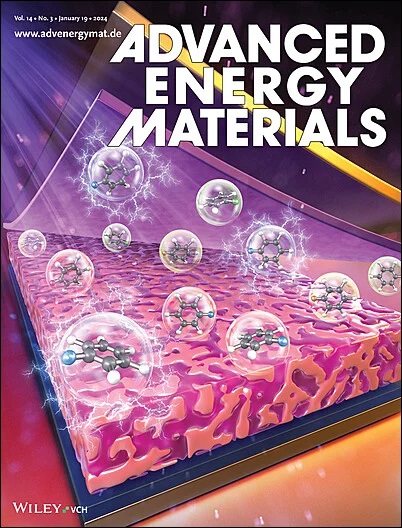Li and Vacancy Co‐Enriched Halide Electrolytes via Non‐Equimolar Substitution for Stable All‐Solid‐State Lithium Batteries
IF 24.4
1区 材料科学
Q1 CHEMISTRY, PHYSICAL
引用次数: 0
Abstract
Halide solid electrolytes (SEs) have emerged as promising candidates for all‐solid‐state batteries (ASSBs) owing to their considerable ionic conductivity, mechanical deformability, and compatibility with high‐voltage cathodes. However, the conventional equimolar substitution strategy for developing halide SEs has limitations, as it fails to simultaneously ensure the presence of abundant vacancies and mobile Li‐ions, which are two critical factors governing ionic conductivity. Herein, a non‐equimolar substitution strategy is adopted to design a Li and vacancy co‐enriched Li通过非等摩尔替代制备稳定全固态锂电池的Li和空位Co富集卤化物电解质
卤化物固体电解质(SEs)已成为全固态电池(assb)的有前途的候选者,因为它们具有相当大的离子电导率,机械变形性和与高压阴极的兼容性。然而,传统的等摩尔取代策略有局限性,因为它不能同时保证大量空位和移动Li离子的存在,这是控制离子电导率的两个关键因素。本文采用非等摩尔取代策略,设计了具有高离子电导率(1.74 mS cm−1)和与高压富Ni阴极相容的锂和空位共富集Li2Zr0.75Ta0.2Cl6。具体来说,更多的Zr4+被更少的Ta5+取代以产生Zr -空位,而不会耗尽Li -离子含量,同时保持电荷中性。在Li -富态下,丰富的Zr -空位在非Li -中心八面体框架内提供了额外的Li -离子迁移途径,促进了Li -离子的均匀和高效迁移。用单晶LiNi0.8Co0.1Mn0.1O2 (scNCM811)阴极组装的assb表现出优异的循环稳定性,具有高容量保持率(7800次以上80.0%),并在5℃的高速率下保持稳定循环超过12000次。值得注意的是,即使在高负载条件下(20.62 mg cm - 2 scNCM811), assb在800次以上保持80.8%的容量保持率,在2300次以上保持70.1%的容量保持率。
本文章由计算机程序翻译,如有差异,请以英文原文为准。
求助全文
约1分钟内获得全文
求助全文
来源期刊

Advanced Energy Materials
CHEMISTRY, PHYSICAL-ENERGY & FUELS
CiteScore
41.90
自引率
4.00%
发文量
889
审稿时长
1.4 months
期刊介绍:
Established in 2011, Advanced Energy Materials is an international, interdisciplinary, English-language journal that focuses on materials used in energy harvesting, conversion, and storage. It is regarded as a top-quality journal alongside Advanced Materials, Advanced Functional Materials, and Small.
With a 2022 Impact Factor of 27.8, Advanced Energy Materials is considered a prime source for the best energy-related research. The journal covers a wide range of topics in energy-related research, including organic and inorganic photovoltaics, batteries and supercapacitors, fuel cells, hydrogen generation and storage, thermoelectrics, water splitting and photocatalysis, solar fuels and thermosolar power, magnetocalorics, and piezoelectronics.
The readership of Advanced Energy Materials includes materials scientists, chemists, physicists, and engineers in both academia and industry. The journal is indexed in various databases and collections, such as Advanced Technologies & Aerospace Database, FIZ Karlsruhe, INSPEC (IET), Science Citation Index Expanded, Technology Collection, and Web of Science, among others.
 求助内容:
求助内容: 应助结果提醒方式:
应助结果提醒方式:


